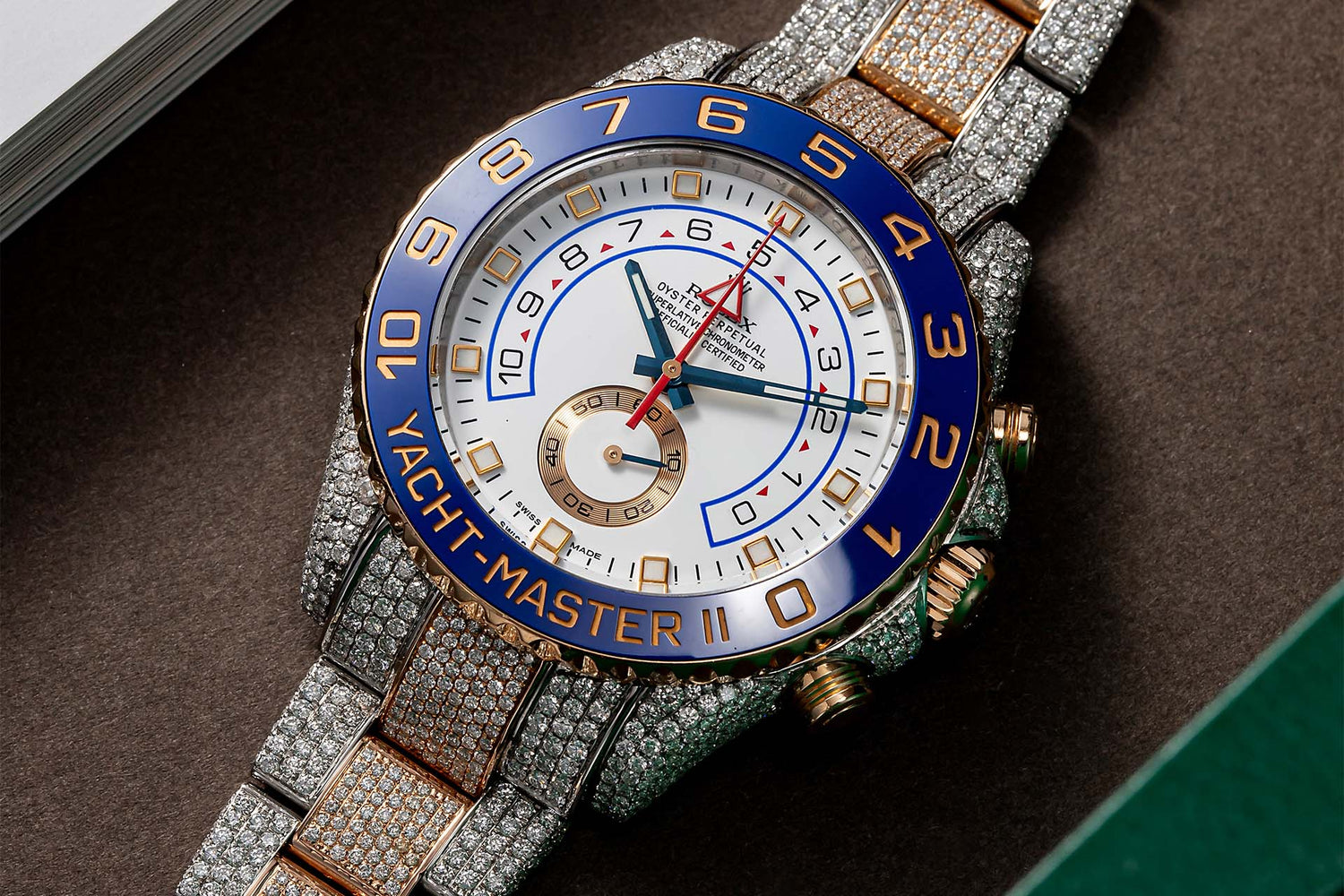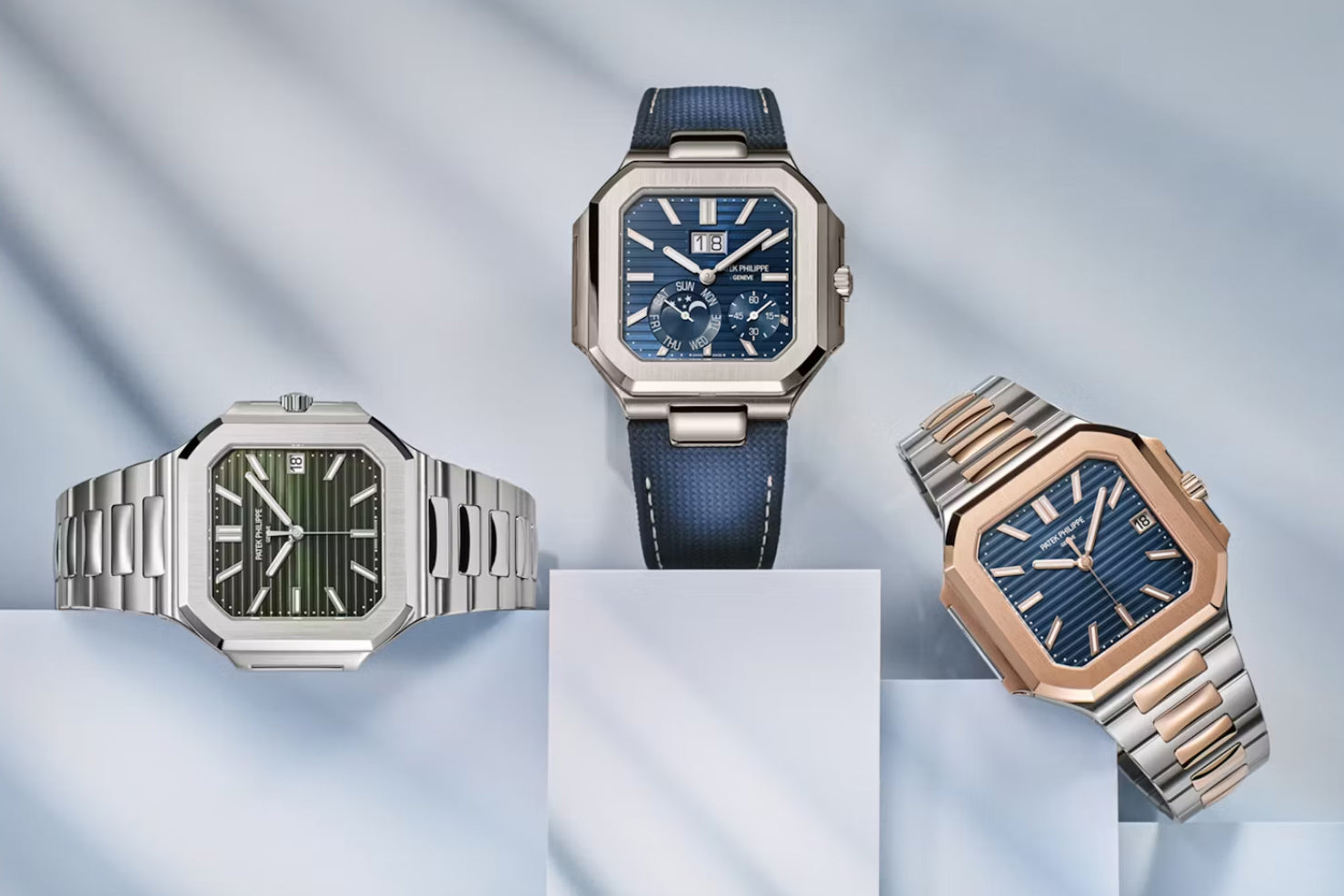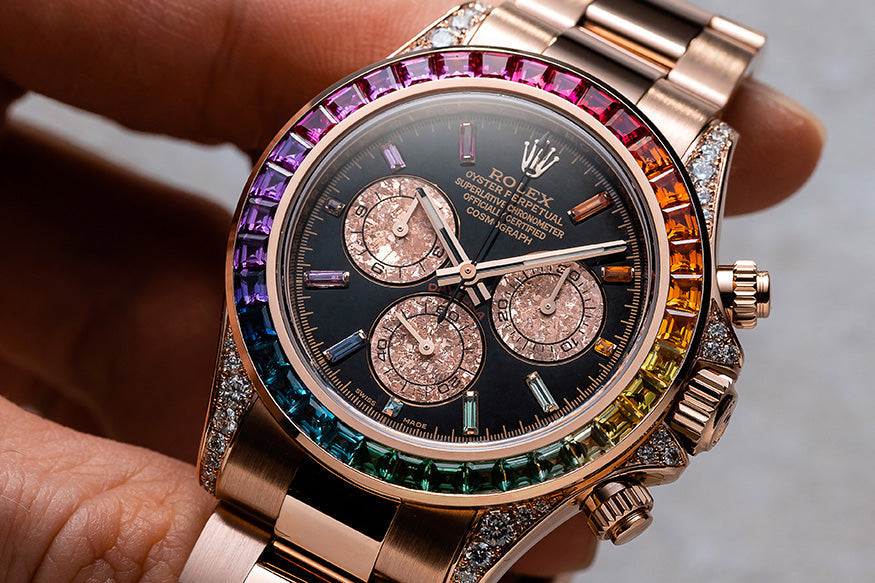Post Contents:
In the horological world, luxury watches are the best watches, in every sense. An element in which they shine is through their design, with brands looking to explore new ways of improving the creation and aesthetics of their models.
A way this is possible is through the use of gemstones, particularly diamonds. The topic of customisation is prevalent at Time 4 Diamonds, as we post many videos and blogs based on custom watches.
Customisation is a huge part of our company, being known to create magnificent bespoke pieces for customers, so there is a use of gemstones in our customisations quite frequently with a wide option for clients to choose from when looking to customise their timepiece.
Looking at the theme of gemstones, this article will consist of the battle between diamonds and gemstones.
How are Diamonds and Gemstones Formed?
The difference between diamonds and other gemstones is the fact that diamonds are formed from a single element, which is high pressured carbon.
When exposed to very high temperatures and pressures, the carbon atoms start touching other atoms, which react and bond together to result in diamonds.
Whereas other gemstones are naturally formed from multiple elements or compounds, which means that diamonds are slightly more natural and have a sense of purity.
Sourcing Diamonds and Gemstones
The source of diamonds and gemstones is fairly similar. Hypothetically, diamonds and gemstones can be found anywhere, but there are main places you will find them and the only places.
Diamond’s main sources are Russia, Canada, Australia and Southern Africa, whilst gemstones have no defined source. Despite the fact that some gemstones are still rare, they are easier to source and are mainly found in southern Africa like Kenya or Tanzania,
Therefore, diamonds are harder to find and rarer to possess as the sources are limited, whereas gemstones can be located and accessed in more places, having an effect on the pricing of the two.
Structure of Diamonds and Gemstones
When looking at the strength of diamonds compared to other gemstones, diamonds are stronger and hard-wearing, making them ideal to wear everyday. They are also able to last a lifetime!
Fewer gemstones are durable like sapphires and rubies, yet most are brittle due to their mineral structure meaning they are more likely to chip or gain damage from water or heat.
Diamonds are taking a lot of the positive light so far, being displayed as rare and strong, but there are strengths surrounding gemstones.
Is Colour on the Rise?
Diamonds are deemed too conventional and can also be considered as plain, meaning colour is favoured. Gemstones come in a selection of various colours, all very stunning and mesmerising, meaning they are an attraction for customers.
Also, linking to our customisation, current social trends show that people are becoming aligned to the idea of colour. People are wanting to express themselves in different ways more than ever before, so gemstones are becoming more popular.
Additionally, being plain is becoming boring with many wanting to be different or unique in their own ways, so therefore, gemstones take a hand over diamonds on this one.
The Expense of Diamonds and Gemstones
Also, a lot of what has been mentioned surrounding why diamonds are favoured means they are much more expensive than other gemstones.
There are alternative ways of looking at the value of diamonds and gemstones; diamonds being more expensive must depict that they are the better option. Yet, gemstones being cheaper and still displaying beauty can create an ultimatum that they are the better option.
How is the Value of Diamonds and Gemstones Determined?
A similarity of the two is how the value is determined of a diamond and gemstone; both of their values will be finalised due to the cut, clarity, colour and carat, aka the system of the 4 C’s.
There are different types of cut such as round-cut, and the grading is from excellent to poor, it is advised that to choose a cut that is at least good.
Clarity is down to the inclusions on a gemstone, these are the small fractures on the gemstones, the fewer the inclusions, the better its clarity, the higher its price.
Clarity has its own grading system having flawless (FL) at the top going down to the bottom of included 3 (I3). Flawless clarity is the best, but good clarity can be gained with a slightly included 2 (SI2) gemstone.
The colour is the main part when gaining a price for gemstones. For diamonds, the grading goes from a scale of the letter D to Z.
Colour D diamonds are colourless, but the lower you go down the scale, a tint of yellow will be seen in the appearance of the diamond.
Even though colour D is completely colourless, it is very hard to see a tint of yellow up to colour J, as the naked eye wouldn’t be able to notice it.
For other gemstones, using a ruby as an example, the brighter the red of a ruby, the stronger its colour meaning the higher its price.
Finally is the carat, the higher the amount of carats, the bigger the diamond is.
This is not an essential part of the grading as you can get a small diamond with strong grading in the other three c’s and is going to look better than a large diamond with poor grading of the other three c’s.
In conclusion, it is down to preference, a client will want something that is simple yet so elegant, or they will want colour to make a statement, they may even want a combination of both diamonds and gemstones.
Diamonds are favoured majority of the time because they are rarer and hold more value, whilst also being extremely stunning.
They hold an extremely high status and display that when wearing diamonds on any type of jewellery.
However, the use of gemstones has been very successful for us when customising watches, there is an argument that gemstone use is on the rise.




